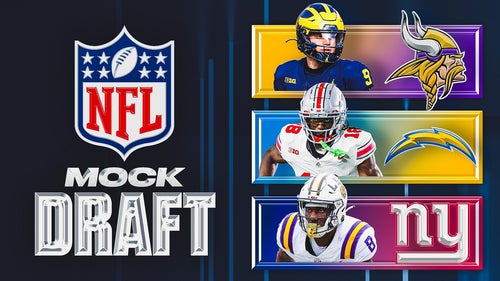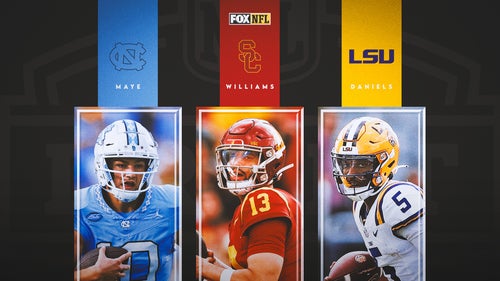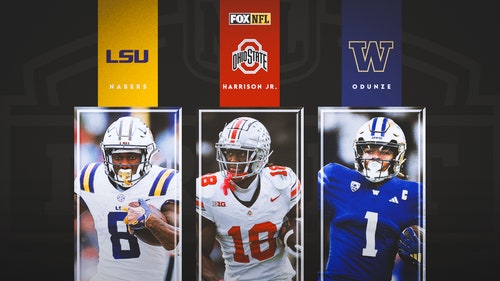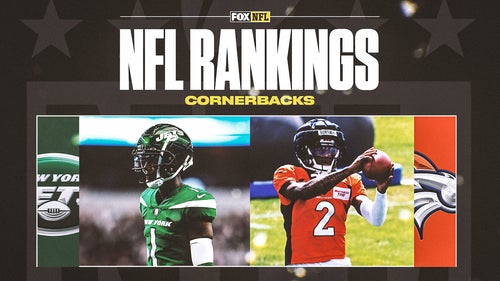
Cleveland Browns: Grades from loss to Patriots
Oct 9, 2016; Cleveland, OH, USA; New England Patriots quarterback Tom Brady (12) talks with Cleveland Browns wide receiver Rashard Higgins (81) after the game at FirstEnergy Stadium. The Patriots won 33-13. Mandatory Credit: Scott R. Galvin-USA TODAY Sports
The Cleveland Browns fell at the hands of the New England Patriots, 33-13, Sunday afternoon. Did any position group perform well despite the awful outcome?
While the Cleveland Browns are busy trying to set a world record for the most quarterbacks to play in a football season, the New England Patriots are not messing around. Sunday afternoon’s less than captivating matchup between the Browns and the Patriots was the first game of the 2016 Browns season which was not competitive. In a lopsided game from almost the very beginning, the Patriots trounced the Browns in every facet, 33-13.
It was made evident early on that it was clearly not an afternoon cut out for Cleveland. Rookie quarterback Cody Kessler who was starting his third consecutive game went down with an ailing shoulder and chest. To add insult to injury, this play resulted in a safety, a turning point in the game.
After the Browns summoned long-time backup Charlie Whitehurst to play quarterback, everything went downhill from there. The Patriots dominated in star quarterback Tom Brady‘s return, and the Browns had no answers defensively. They also struggled moving the ball immensely, all contributing to the final discouraging result.
The following is Cleveland’s full report card from Sunday’s game, involving each major position group. The grades given were earned, and based solely on a given unit’s performance on Sunday afternoon only. No other factors or prejudice in any way is incorporated.
Oct 9, 2016; Cleveland, OH, USA; Cleveland Browns quarterback Charlie Whitehurst (15) throws a pass during the second quarter against the New England Patriots at FirstEnergy Stadium. Mandatory Credit: Ken Blaze-USA TODAY Sports
Quarterback: D
The Browns really had three quarterbacks on Sunday, but Charlie Whitehurst was the most notable since Kessler went out in the first quarter, and Terrelle Pryor hardly played at the position. Kessler looked about as promising as he has in the last two games during his limited action, completing five out of eight passing attempts for 62 yards and a touchdown pass to Andrew Hawkins.
After the injury and safety which widened the New England lead to 16-7, Whitehurst entered. He finished the afternoon completing 14 of 24 pass attempts for a total of 182 yards. He also threw a touchdown pass, but had an interception as well.
Overall, Whitehurst’s performance was typical of a quarterback of his caliber who has spent little time in the offense. After Kessler’s injury, not much was expected of the infamous backup, and little surprise resulted. Not to excuse some of the poor decisions made by the seasoned quarterback, but Whitehurst truly was not put in a fair situation. It also didn’t help that he was forced to throw on virtually every play in the second half since the Browns got absolutely no production on the ground. In the end though, fair or not, Cleveland quarterbacks did nothing to keep the team in the game and give them a chance to pull off an extremely difficult task.
Sep 18, 2016; Cleveland, OH, USA; Cleveland Browns running back Isaiah Crowell (34) against the Baltimore Ravens during the second half at FirstEnergy Stadium. The Ravens defeated the Browns 25-20. Mandatory Credit: Scott R. Galvin-USA TODAY Sports
Running Backs: F
As for Cleveland’s rushing attack which came in leading the league, the final stats speak for themselves as to how miserable the unit was on Sunday. In total, Cleveland running backs carried the ball 17 times for a grand total of 23 yards.
Though it is really irrelevant what the exact numbers were, Isaiah Crowell carried the ball 13 times for 22 yards, and Duke Johnson rushed four times for one yard. Though this extreme lack of productivity is hard to fathom, it was really a reflection of some awful decisions made by both running backs at times. The amount of plays which went for negative yardage was unparalleled even for the Browns. The running backs would have done better just falling forward across the line of scrimmage every play. It’s no wonder why Cleveland abandoned the running game altogether as the second half progressed.
Many will blame the horrendous play of the running backs on the offensive line. But while there weren’t very many running lanes all afternoon for the Browns, Johnson and Crowell only did themselves a disservice trying to make too much happen. The poor play of the offensive line wasn’t bad enough to render these types of numbers. This was a direct result of horrible decisions by the running backs which led to numerous negative plays which killed drives.
Oct 9, 2016; Cleveland, OH, USA; Cleveland Browns wide receiver Andrew Hawkins (16) catches touchdown during the first quarter as New England Patriots cornerback Cyrus Jones (24) defends at FirstEnergy Stadium. Mandatory Credit: Ken Blaze-USA TODAY Sports
Wide Receivers: D
As a direct result of the lack of offense in general, Cleveland’s wide receivers were not placed in favorable situations in any sense. In fact, despite 35 pass attempts combined on the afternoon, receivers only accounted for 117 yards.
Leading the way was Andrew Hawkins, which is a bit of a surprise, though not stunning since he only recorded 56 yards. Hawkins did however catch a touchdown pass which evened the game at seven early on. Terrelle Pryor had a disappointing outing for the most part, finishing with just 46 receiving yards and rushing for only three. The only other receivers who played were rookies Ricardo Louis and Rashard Higgins. Louis caught two passes for 13 yards, and Higgins failed to make a catch on the afternoon. Other than these four players, no additional receivers even entered the Cleveland offensive huddle.
It wasn’t all the receivers fault of course, as too many throws were well off target and communication was far from smooth. But when given the opportunity to make plays, this unit failed to do so more often than not.
The Browns knew that they would need to score a lot to compete with the Patriots, and the lack of production from the wide receiver position contributed to the fact that they were not able to do so.
Oct 9, 2016; Cleveland, OH, USA; Cleveland Browns quarterback Cody Kessler (6) throws a pass against the New England Patriots during the first quarter at FirstEnergy Stadium. Mandatory Credit: Ken Blaze-USA TODAY Sports
Offensive Line: D
Cleveland has experienced a roller coaster of offensive line play so far this season. It started off miserably, but improved very much the last two weeks as the running game got going. This improvement was highlighted the outstanding play of by Austin Reiter, the backup center replacing the injured Cameron Erving.
Unfortunately, Reiter is injured, forcing natural guard John Greco over to the center position. To say that this did not bode well for the Browns on Sunday would be an understatement. The unit was manhandled by New England’s defensive line all game long, and was often times overwhelmed by the pass rushing linebackers.
The offensive line only surrendered two sacks for 14 yards in total loss, and also only committed two penalties. But on the flip side, they didn’t do a whole lot which proved to be productive. As horribly as the running backs performed, some of this responsibility still falls upon the shoulders of this unit. 27 yards rushing in total is not acceptable. Not to mention, all of the times which all three of the Browns’ quarterbacks were rushed out of the pocket before plays even truly developed completely fractured so many snaps and slowed drives.
No matter what the stats say or what excuses could be made, the offensive line must improve and return to last week’s form before this Cleveland offense has a chance.
Oct 9, 2016; Cleveland, OH, USA; Cleveland Browns tight end Connor Hamlett (89) catches a touchdown as New England Patriots cornerback Jonathan Jones (31) defends during the second half at FirstEnergy Stadium. The Patriots won 33-13. Mandatory Credit: Ken Blaze-USA TODAY Sports
Tight Ends: B
Finally, a positive aspect of Sunday’s game. After four weeks of underperforming, the Browns’ tight ends came to play in Week 5. In an offense which tight ends are used heavily, often two in a given formation, one would expect this group to provide the offense with their fair share of production. On Sunday, this actually happened.
Gary Barnidge was Cleveland’s leading receiver, gaining 76 yards in five receptions. Even Connor Hamlett, the pleasant surprise of training camp, caught a touchdown pass from Whitehurst.
Not only this, there were other time where Barnidge especially was wide open over the middle of the field but could not haul in a reception due to a poor throw. This reveals that the 2015 breakout tight end is returning to previous form, finding himself open on many plays once again and giving the Browns offense an effective safety valve option.
Even through all of this, the tight ends must find a way to improve their run blocking. This offense cannot afford to use a two-tight end formation if these players are not each effective blockers. Helping the running game needs to be a top priority of this offense at every position, not just the running backs. This will help stimulate the rest of the offense. All in all though, on Sunday, the tight ends served as an encouraging light in the midst of numerous poor performances.
Oct 9, 2016; Cleveland, OH, USA; New England Patriots quarterback Tom Brady (12) runs from Cleveland Browns defensive end Jamie Meder (98) during the second half at FirstEnergy Stadium. Mandatory Credit: Ken Blaze-USA TODAY Sports
Defensive Line: B
All things considered, the Browns rushing defense was actually very impressive. The unit worked together to hold New England running backs to under 100 yards of rushing. There were times where it seemed that the Patriots only ran the ball to keep the defense honest, and were consistently stopped, forcing Brady to move the ball through the air.
Not only that, but the Browns also did manage to get a substantial amount of pressure on Brady after the first quarter. They only came away with one sack, but the defensive line was finally able to generate some pressure on the quarterback without needing to send multiple extra rushers.
Jamie Meder had the sack, and was assisted by Stephen Paea and Danny Shelton. While the statistics may not have shown great success for this line, they did their job. Unfortunately, they were victims of a sharp Brady who delivered multiple strikes while under pressure. They also couldn’t finish several sacks, and couldn’t get off the field as a result.
Oct 9, 2016; Cleveland, OH, USA; New England Patriots wide receiver Danny Amendola (80) makes a reception against Cleveland Browns inside linebacker Demario Davis (56) during the second quarter at FirstEnergy Stadium. The Patriots won 33-13. Mandatory Credit: Scott R. Galvin-USA TODAY Sports
Linebackers: D
It was a very adventurous afternoon to say the least for Cleveland’s linebackers. On one hand, it appeared to have been a very productive game for this unit, highlighted by Christian Kirksey‘s team-leading 11 tackles and the six tackles made by Demario Davis. Some of these plays occurred in the run game where the Browns excelled, so the unit should be commended. But many were merely the result of a wide open receiver which had to be tackled by somebody. In this way, there were many times where Kirksey or Davis missed an assignment but then got credit for the tackle.
Most notably, the linebackers blew assignment after assignment in their coverage of tight ends. Surprisingly, Rob Gronkowski was limited to just 109 yards, though many of which were much too easy. What hurt the Browns most though was Martellus Bennett, who caught all of Brady’s three touchdown passes. Kirksey should have been covering the large target, but was either overwhelmed or confused. He may have made tackles along with Davis, but only after completions which were good for chunks of yardage at a time, allowing the Patriots to put up 33 points.
To give a group credit for chasing players all over the field after blowing coverage is an extremely unfortunate and uninformed thing to do. The linebackers may be giving their all, and they may have had no chance being so over matched against the Patriots. But still, this group must find a way to clean themselves up, communicate better, and tackle more soundly in future weeks.
Oct 9, 2016; Cleveland, OH, USA; New England Patriots tight end Martellus Bennett (88) celebrates his second quarter touchdown against the Cleveland Browns at FirstEnergy Stadium. Mandatory Credit: Scott R. Galvin-USA TODAY Sports
Secondary: C
As is most often the case for any secondary when they play the Patriots, the Browns struggled in this area on Sunday afternoon. Brady was completing passes all over the field to various receivers, including little-known Chris Hogan. With a depleted secondary, the Browns never had a chance to match up with the likes of Brady and offensive coordinator Josh McDaniels.
Still, this group battled very well. using multiple players, including Joe Haden, Derrick Kindred, Jordan Poyer, Jamar Taylor and Ibraheim Campbell, Cleveland did everything they could against multiple potent threats presented by New England.
In the end, the Patriots scored four touchdowns, and the secondary did little to slow them down. This accounts for their average grade, as they did what they could and gave it their all, but rendered little results. No turnovers, few pass break-ups, and no sacks or tackles for loss.
In future weeks, this secondary needs to keep doing what they did on Sunday. They really held their own, all things considered. They weren’t really responsible for the loss, and could come away with much better results against different opponents. Only time will tell.
Oct 9, 2016; Cleveland, OH, USA; Cleveland Browns kicker Cody Parkey stretches prior to the game against the New England Patriots at FirstEnergy Stadium. Mandatory Credit: Scott R. Galvin-USA TODAY Sports
Special Teams: C
It was a rather uneventful afternoon for the special teams. Cody Parkey didn’t force fans to hold their breath, since he never lined up to kick a field goal. The relatively new Cleveland kicker kicked one extra point, but the offense went for two on the second touchdown, so Parkey’s day was virtually over. Britton Colquitt was busy punting, as he averaged 44.5 yards over six punts.
The Browns tried out different kick and punt returners, allowing Duke Johnson and even Joe Haden to unsuccessfully run back the few punts that they saw. In the kick return game, Tracy Howard got four opportunities since the Patriots strategically kicked the ball short almost every kick off and stopped the Browns before they got to the 25-yard-line. This strategy paid dividends for New England in the field position battle.
In the end, the Browns didn’t surrender any big plays on special teams, and did not make any either. They committed one penalty, but it really had no impact on the outcome of the game. Special teams deserve an average grade not so much for what they did, but what they didn’t do. Maybe that can be considered an improvement, or maybe it’s just irrelevant.
Oct 9, 2016; Cleveland, OH, USA; Cleveland Browns head coach Hue Jackson and New England Patriots head coach Bill Belichick meet after the game at FirstEnergy Stadium. Mandatory Credit: Ken Blaze-USA TODAY Sports
Coaching: F
It may not be fair. After all, head coach Hue Jackson and his staff kept the Browns within twenty points against a far superior Patriots team with Charlie Whitehurst at quarterback. Doesn’t Hue deserve any credit for that?
Well, once again, moral victories do not contribute to the grading of these position groups. As good of a guy coach Jackson may be, even if he is the coach to finally turn the Browns around, he did not have them prepared for the Patriots.
Not to mention, the play calling was atrocious. Sure, the running game wasn’t working, but he really didn’t give it a legitimate chance to succeed. It has been proven time and time again that large comebacks are fueled by balance on offense, not a predictable shotgun pass on every play. The Browns threw the ball 35 times and ran it just 19, a ratio of almost 2:1. For a team who dominated on the ground last week, and is playing a career backup at quarterback, this just isn’t going to get it done.
Defensive coordinator Ray Horton also called a miserable game. Just when the team was finding pressure, he mixed everything up dropped everyone back into coverage. Due to this, the Browns watched haplessly as Brady threw for 400 yards.
Jackson and Horton knew what they were getting into when they came to Cleveland for the 2016 season, the first year of this rebuilding process. This isn’t to advocate for their removal in any way. But the coaching staff must take responsibility, have their team prepared better in the coming weeks, and call the game more effectively in order to truly turn the Browns around.
More from Dawg Pound Daily
This article originally appeared on















































































































































